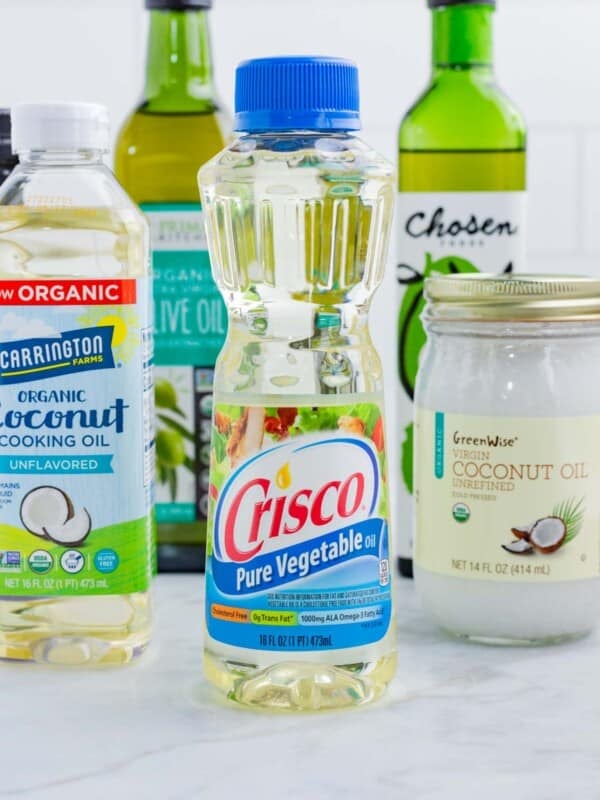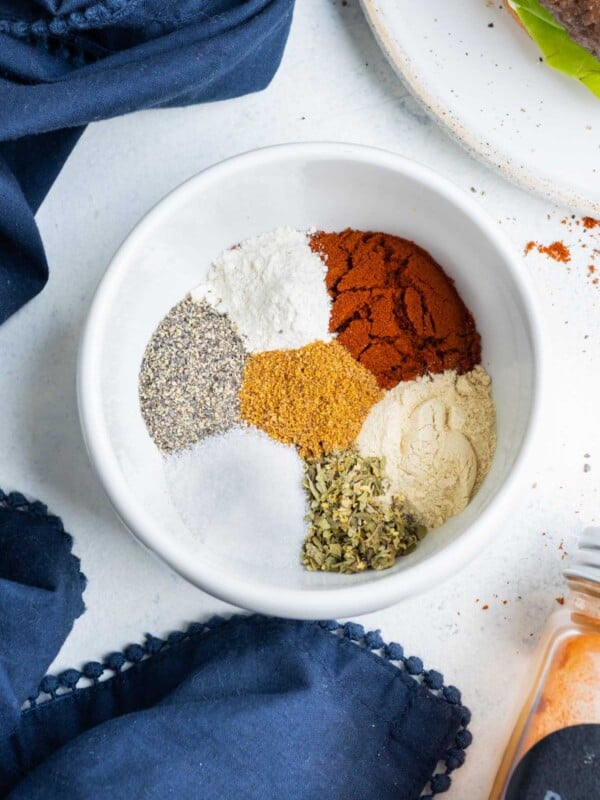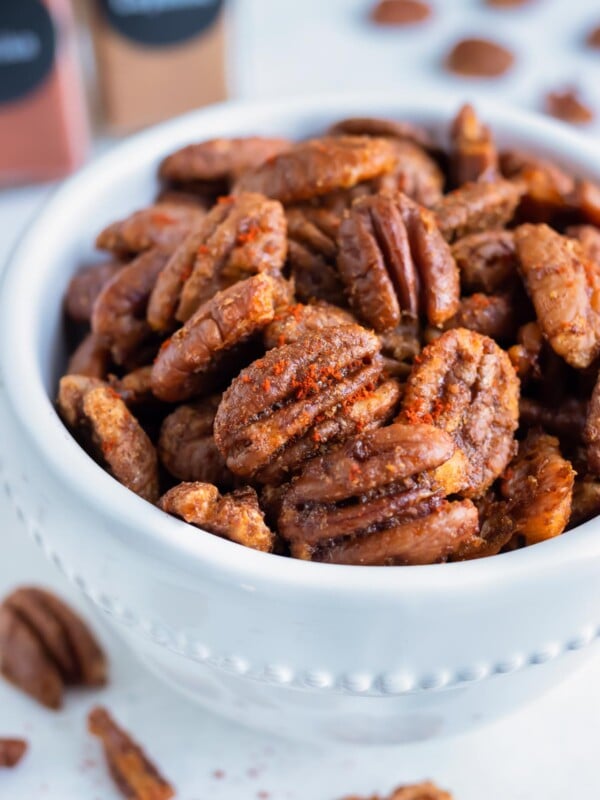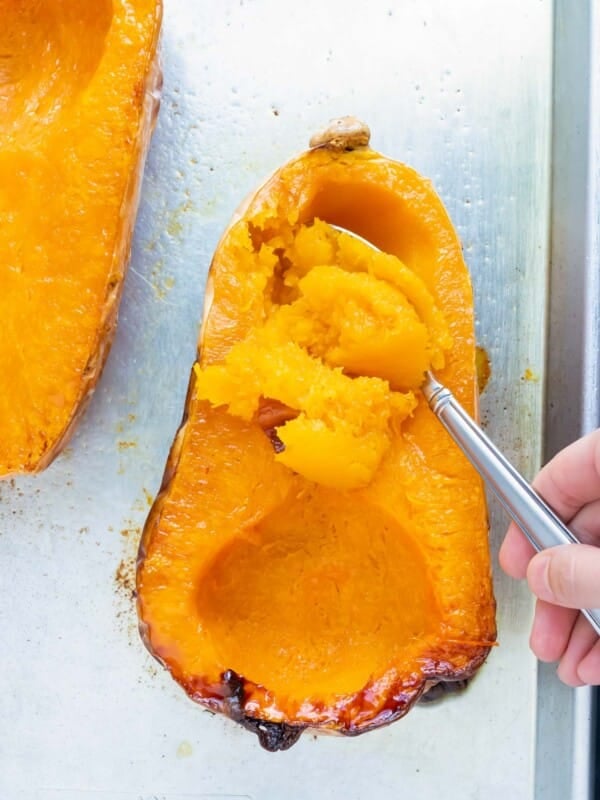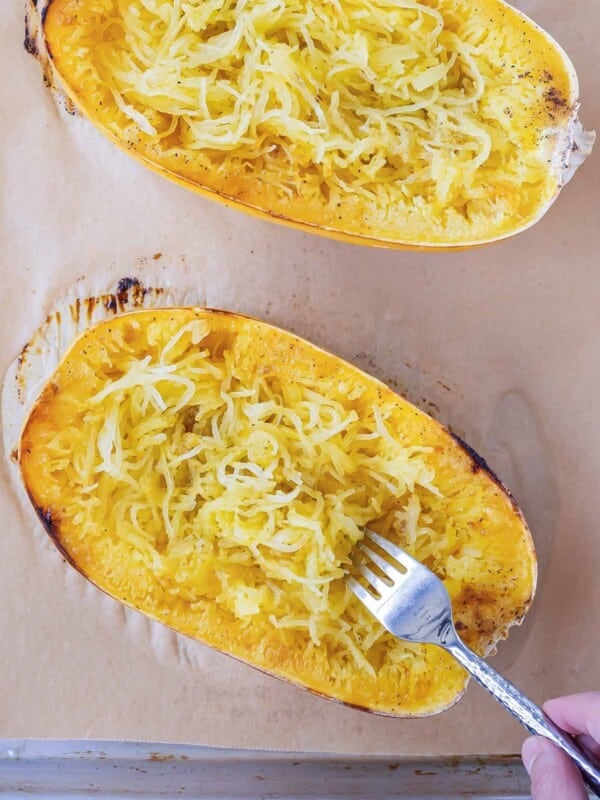What is a smoke point?
An oil’s smoke point refers to the temperature at which it starts to smoke and burn. Studies have shown that heating an oil past its smoking point can be linked to carcinogenic formations. It can also affect the overall flavor and healthiness of your food.
Different oils have different flavors, nutritional profiles, and smoke points based on their unique chemical compositions.
This means that certain oils (those with high smoke points!) are better for high-heat cooking methods, like deep frying, while others are more appropriate for lower temps like sautéing or using in salads.
Generally, refined oils have higher smoke points than unrefined oils because the process of refining them removes many of the organic compounds and free fatty acids that burn easily.
Oil Smoke Points
Here are 15+ of the most common types of cooking oil. We’ll look into their different smoke points, what they are best used for, and some health benefits.
Avocado Oil
Avocado oil has one of the highest smoke points at an impressive 520°F and is best used for deep frying, searing, and stir frying. Avocado oil is known to improve gut health, lower cholesterol, and strengthen skin and hair.
Refined Olive Oil
Refined olive oil’s smoke point is 465°F. This oil works well for all types of cooking, such as grilling, deep frying, sautéing, and stir frying. Note that this oil’s smoke point is quite a bit higher than its cousin, extra virgin olive oil. This type is known to lower the risk of heart disease and actively strengthen your immune system.
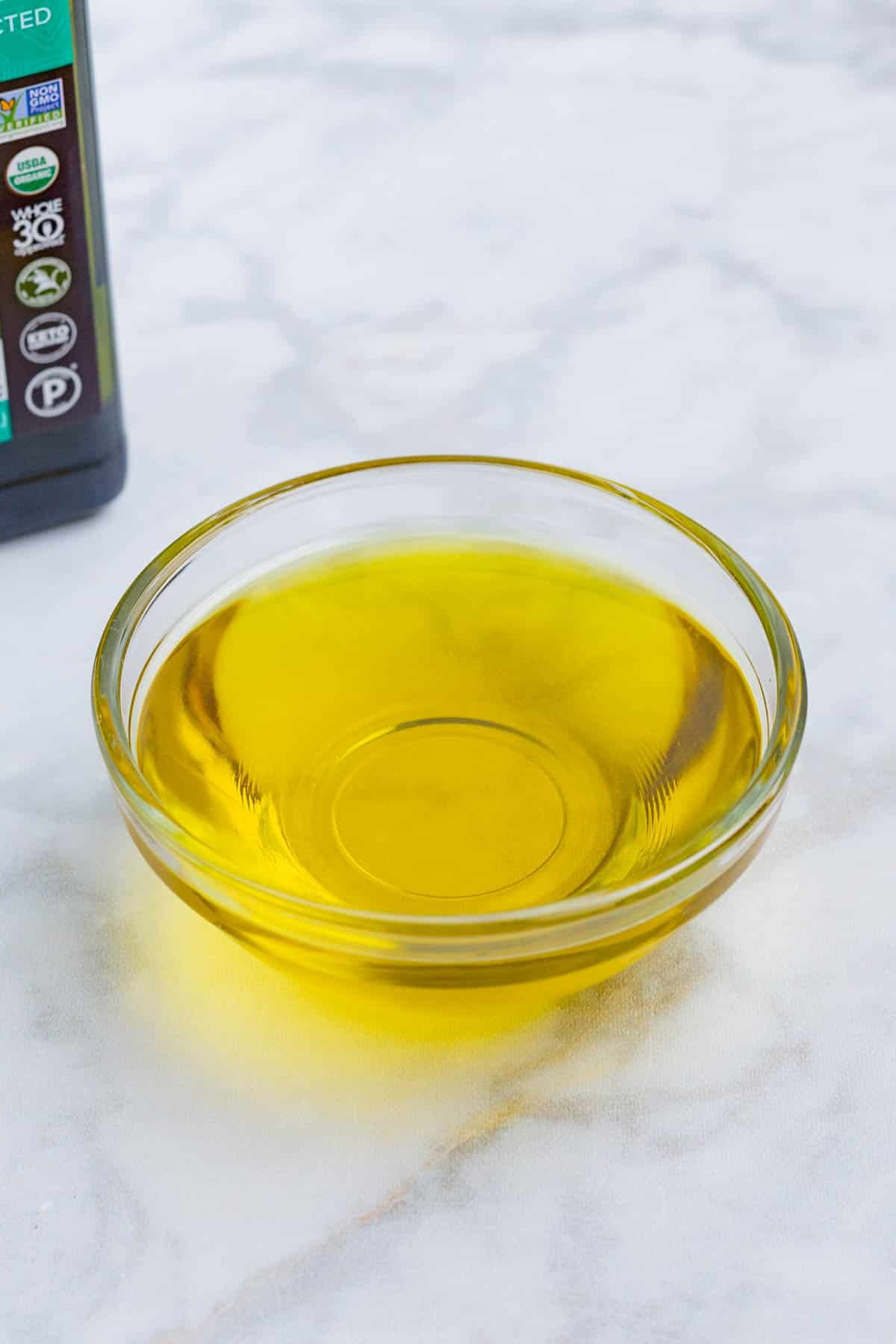
Peanut Oil
Peanut oil has a smoke point of 450°F, so it’s mostly used for deep frying and stir frying. It’s popular in restaurants because of its extremely high smoke point, allowing for a quick crisp on any food.
Ghee
At a 450°F smoke point, ghee (or clarified butter) is best for sautéing, deep frying, and stir frying. Ghee has a fatty acid that helps protect the lining of your intestines, supporting a healthy gut.
Corn Oil
While corn oil might not be as common, know that it can be used for sautéing, deep frying, and searing at a smoke point of 450°F. Corn oil has essential fatty acids like linoleic acid that strengthens skin, cell membranes, and the immune system.
Sunflower Oil
Similar to corn oil, sunflower oil has the same smoke point of 450°F, and is also used for sautéing, deep frying, and searing. Keep in mind that sunflower oil has a different taste than corn oil. Sunflower oil is rich in vitamin E which is important to eye health, the reproductive system, and skin health.
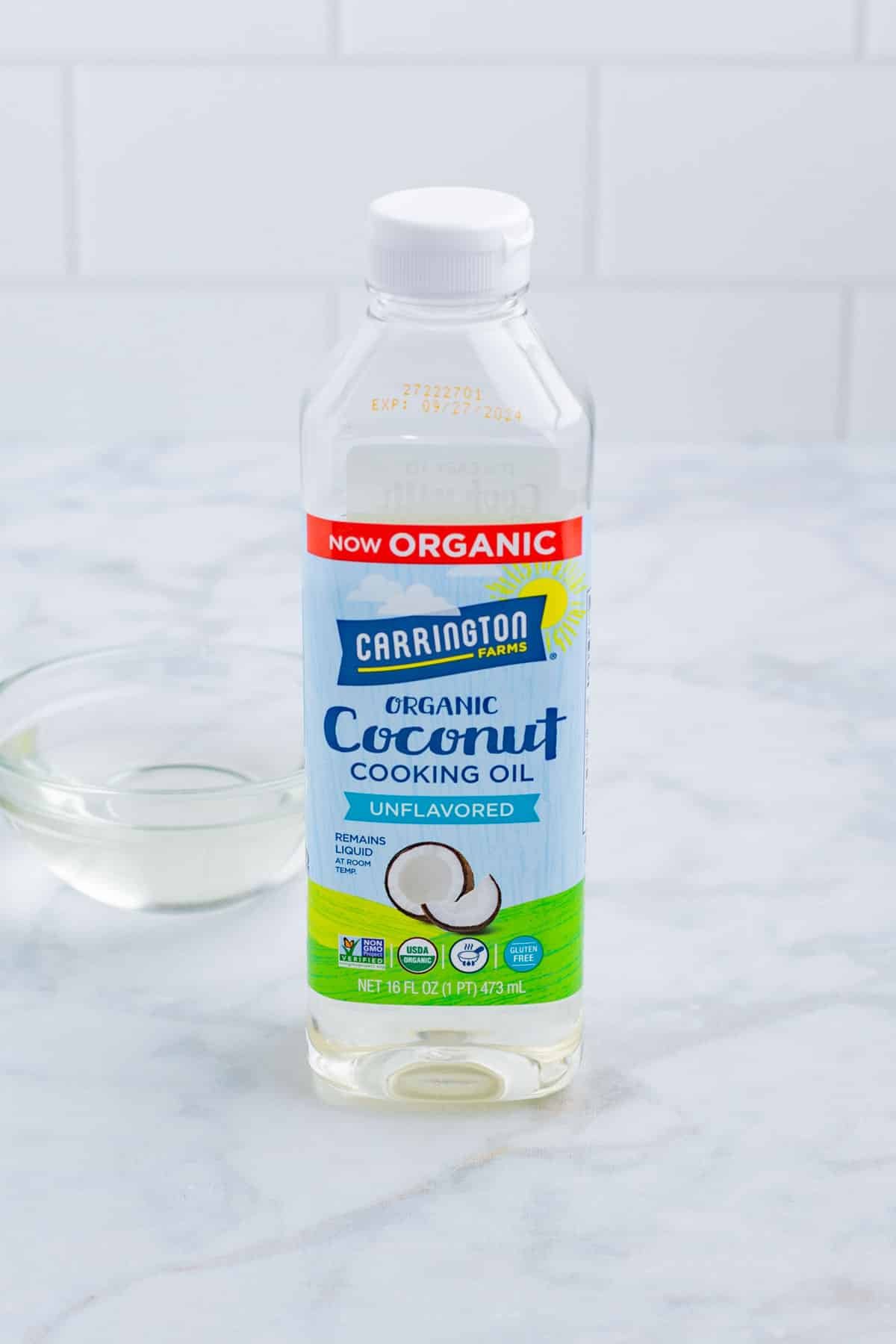
Coconut Oil
Coconut oil has a smoke point of 450°F and works well in stir frying, deep frying, and sautéing. It is not considered a neutral oil, as it carries a coconut flavor. This oil boosts skin health and protects and strengthens hair.
Sesame Oil
Sesame oil’s smoke point is 410°F. It is best used for stir frying. While it has a smoke point over 400°F, it’s not common to deep fry with it because of its unique flavor. With a more nutty flavor, this is mainly used in Asian cooking and in salad dressings. A little of this oil goes a long way!
Canola Oil
At a smoke point of 400°F, canola oil is not only used for cooking like grilling, deep frying, and sautéing, but also for baking. Its wide use is thanks to its neutral flavor and its ability to withstand both medium- and high-heat cooking.
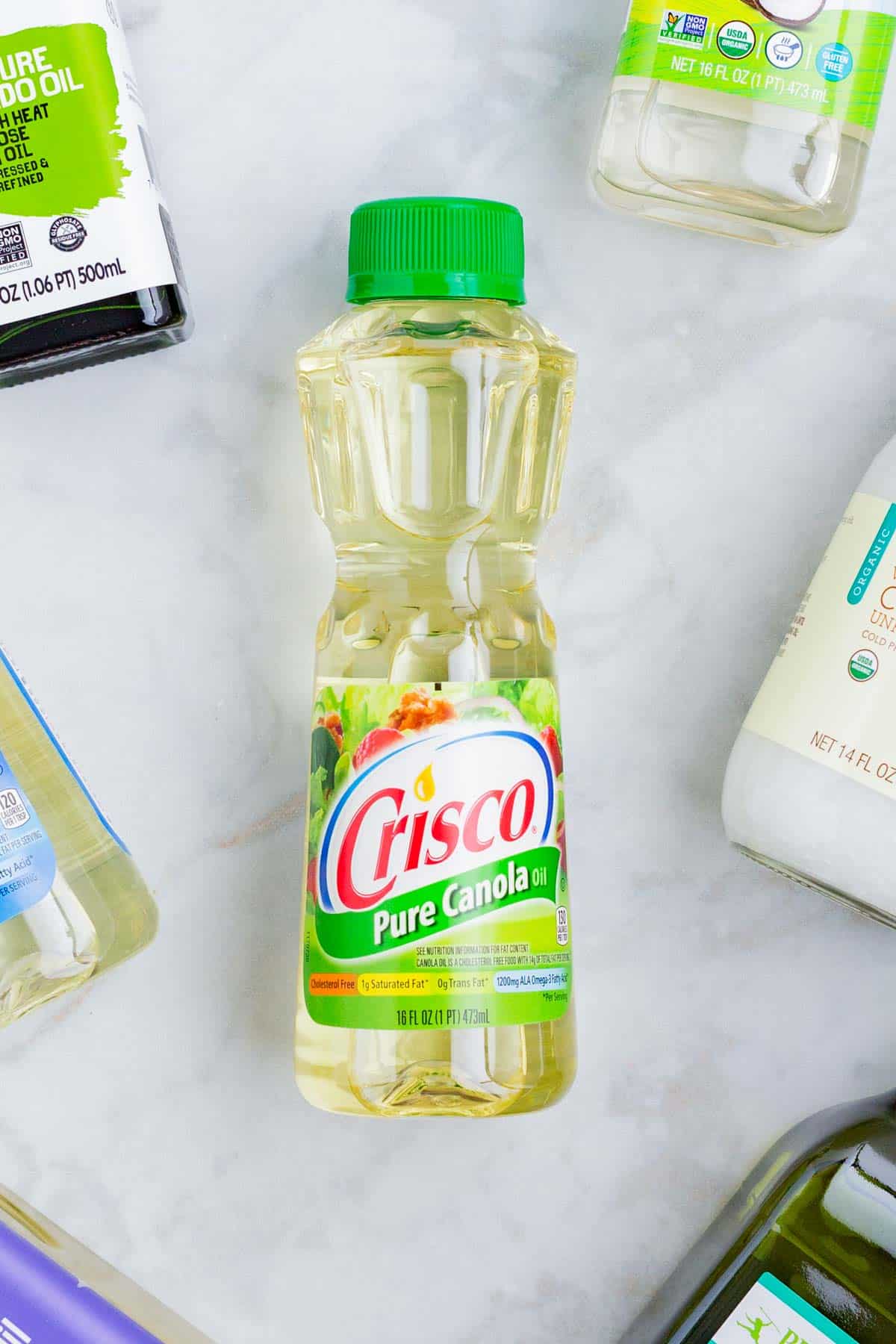
Grapeseed Oil
Best for sautéing and stir frying, grapeseed oil has a smoke point of 400°F. While grapeseed oil is great in cooking, it’s quite expensive and isn’t the most cost-effective option for regular and deep frying use.
Extra Virgin Olive Oil
Just as extra virgin olive oil can vary in its flavor profile, it also has a range for its smoke point: 375°F-400°F. It is most commonly used in baking, salad dressing, and sautéing. Extra virgin olive oil promotes healthy cholesterol levels and reduces inflammation due to its monounsaturated fat content.
Lard
Lard has a smoke point of 375°F and is common in baking, frying, and sautéing. While lard might not be the most liked oil, it does have an excellent source of B vitamins.
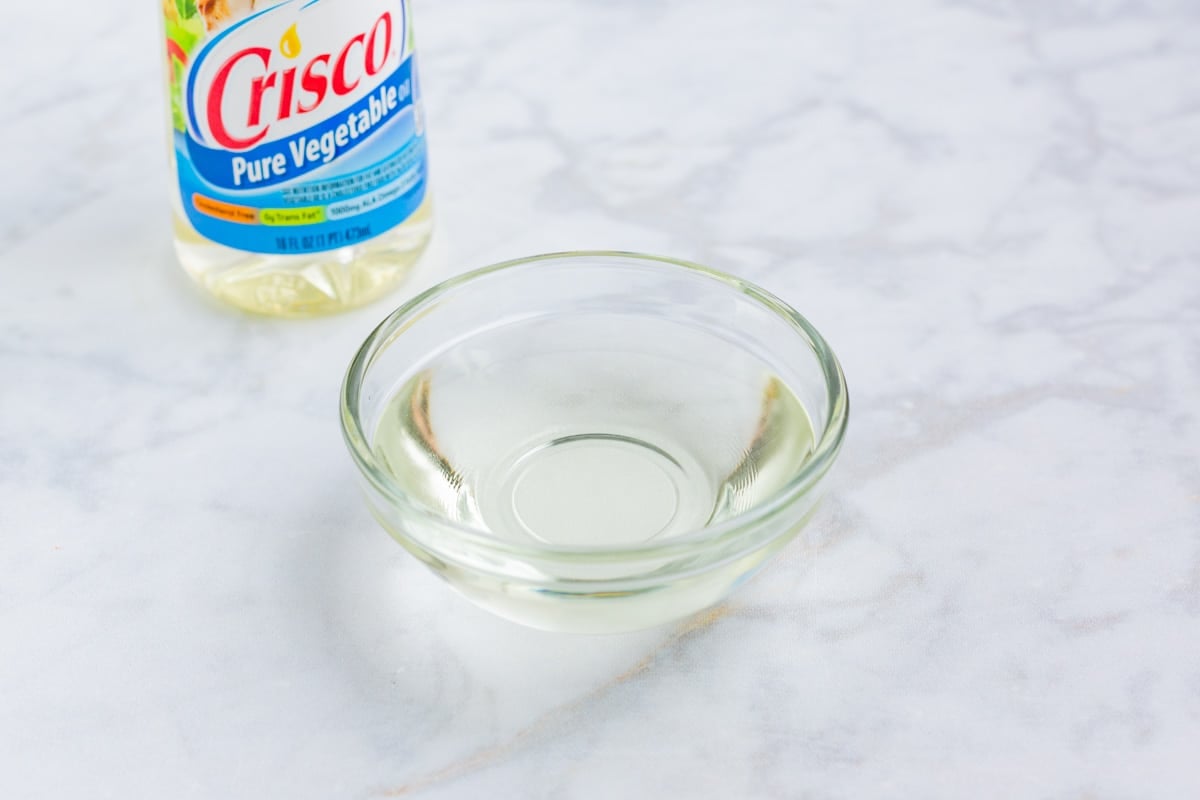
Vegetable Oil
Vegetable oil works well for baking, deep frying, roasting, and searing with a smoke point at 400°F. This oil actually provides omega-3 fatty acids and may lower chances of breast cancer and cardiovascular disease.
Soybean Oil
Soybean oil has a smoke point similar to grapeseed oil at 400°F and is ideal for stir frying. With high amounts of omega-6 fatty acids, soybean oil can reduce inflammation.
Butter
Butter has one of the lowest smoke points at 300°F, which means it burns easily (thanks in large part to the dairy solids it contains). It is best suited for baking and low-heat cooking.
Flaxseed Oil
Flaxseed oil has a smoke point of 225°F works best when not heated, like in salad dressings or bread dipping. Flaxseed oil is full of omega-3 fatty acids. With such a low smoke point, you want to keep this one at room temp to get the most of all its nutrients.
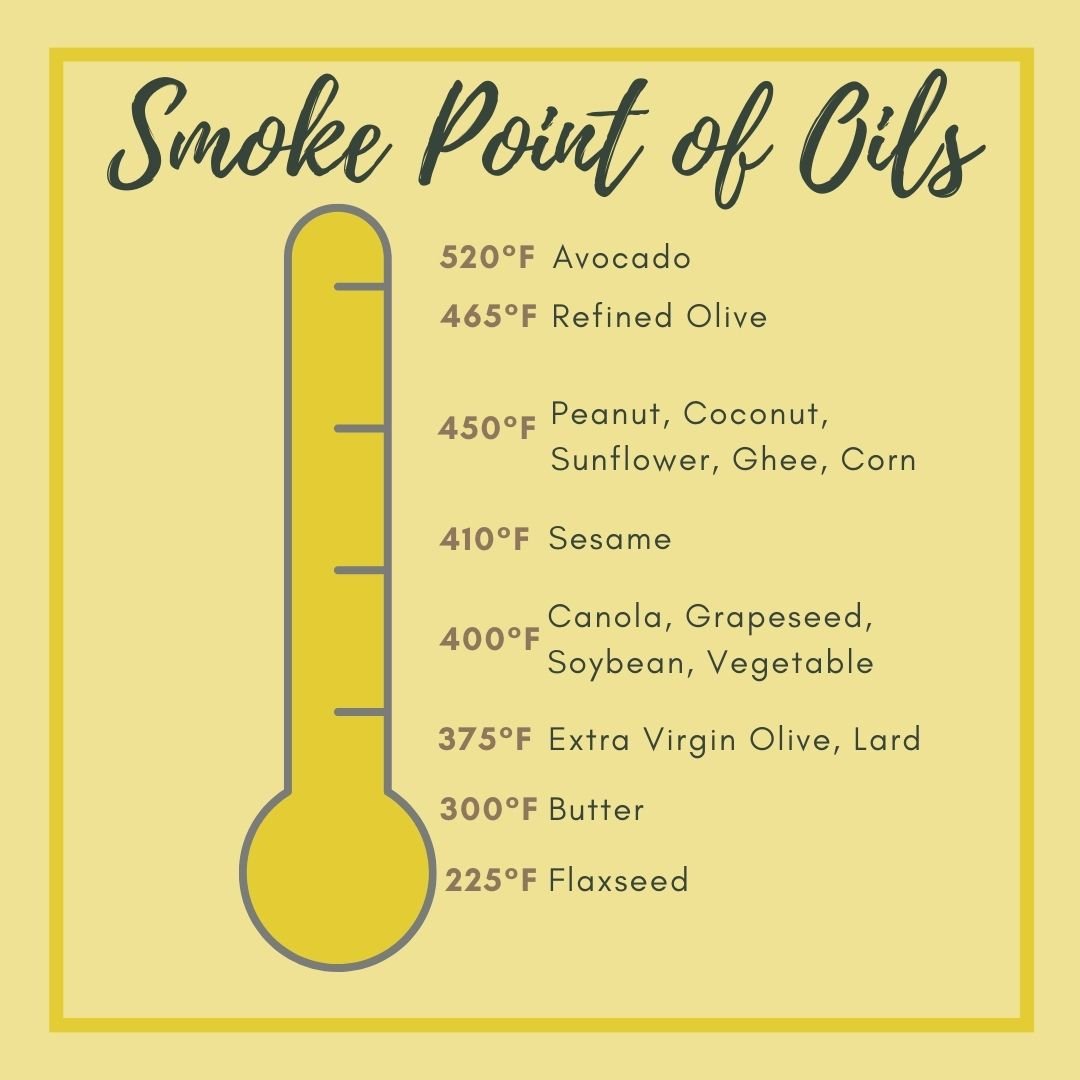
Why do smoke points matter?
Smoke points matter because when your oil burns, it affects the flavor and nutritional value of your food.
The smoke point of an oil often depends on several factors, including whether or not its been refined, the type of fat it is, how old it is and whether it has been exposed to light, air, or heat.
- Refined or unrefined: The process of refining oils removes organic compounds and free fatty acids, both of which burn easily. An oil that’s been refined and no longer contains these elements, therefore, has a higher smoke point.
- Type of Fat: Polyunsaturated fats and monounsaturated fats behave differently when heated. Oils high in polyunsaturated fats generally have lower smoke points. Oils with lots of monounsaturated fats tend to have high smoke points. Some oils with a higher smoke point, however, like sunflower oil, have both polyunsaturated fats and monounsaturated fats, so this isn’t the only factor to consider.
- Age: Light, air, and heat can all play a role in lowering an oil’s smoke point. The longer it’s exposed to these elements, the quicker it will burn.
You certainly want to consider smoke point when deciding which oil to use. Let’s dig into how this can affect your health, how oils with different smoke points also have different nutritional benefits, and the impact they can have on the ultimate flavor of your dish.
Smoke Points & Health
Heating oil beyond its smoke point breaks down its chemical bonds. This can create creating harmful free radicals. The fumes also release carcinogenic compounds that have been linked to certain cancers.
The process of reaching a smoke point in an oil can also eliminate some of its health benefits. For example, when an oil burns, it loses many of its polyphenol compounds, which act as antioxidants. This is common for unrefined oils, which generally have more of these compounds and therefore have lower smoke points.
For these reasons, it’s best to not push an oil past its smoking point or to repeatedly reheat an oil.
Oils & Nutrition
While you may want to choose an oil based solely on its smoke point, it’s also helpful to consider its nutritional benefits, too.
Oils that are high in monounsaturated fats also tend to have higher smoke points because they are considered more “stable” oils—they oxidize less quickly and tend to burn less easily. Peanut, almond, olive, and avocado oils are all high in monounsaturated fat.
However, it’s important to also incorporate polyunsaturated fats into your diet, as these often contain omega-3 fatty acids. We need omega-3s because our bodies don’t produce them on their own. Soybean, grapeseed, flaxseed, and corn oils contain polyunsaturated fats.
Some of these oils—like sunflower—contain a combination of poly and monounsaturated fats. The combination raises their smoke points and gives you the best of both worlds!
Smoke Points & Flavor
Most nut and seed oils have stronger flavors and their flavor is considered a key ingredient for whatever you’re cooking. However, because these oils are often unrefined, they tend to have a lower smoke point. Heating them too much will result in a bitter burnt or off-flavor.
On the other hand, more neutral oils like olive, corn, and avocado also have higher smoke points. That’s why they are ideal for sautéing, browning, caramelizing, or frying foods.
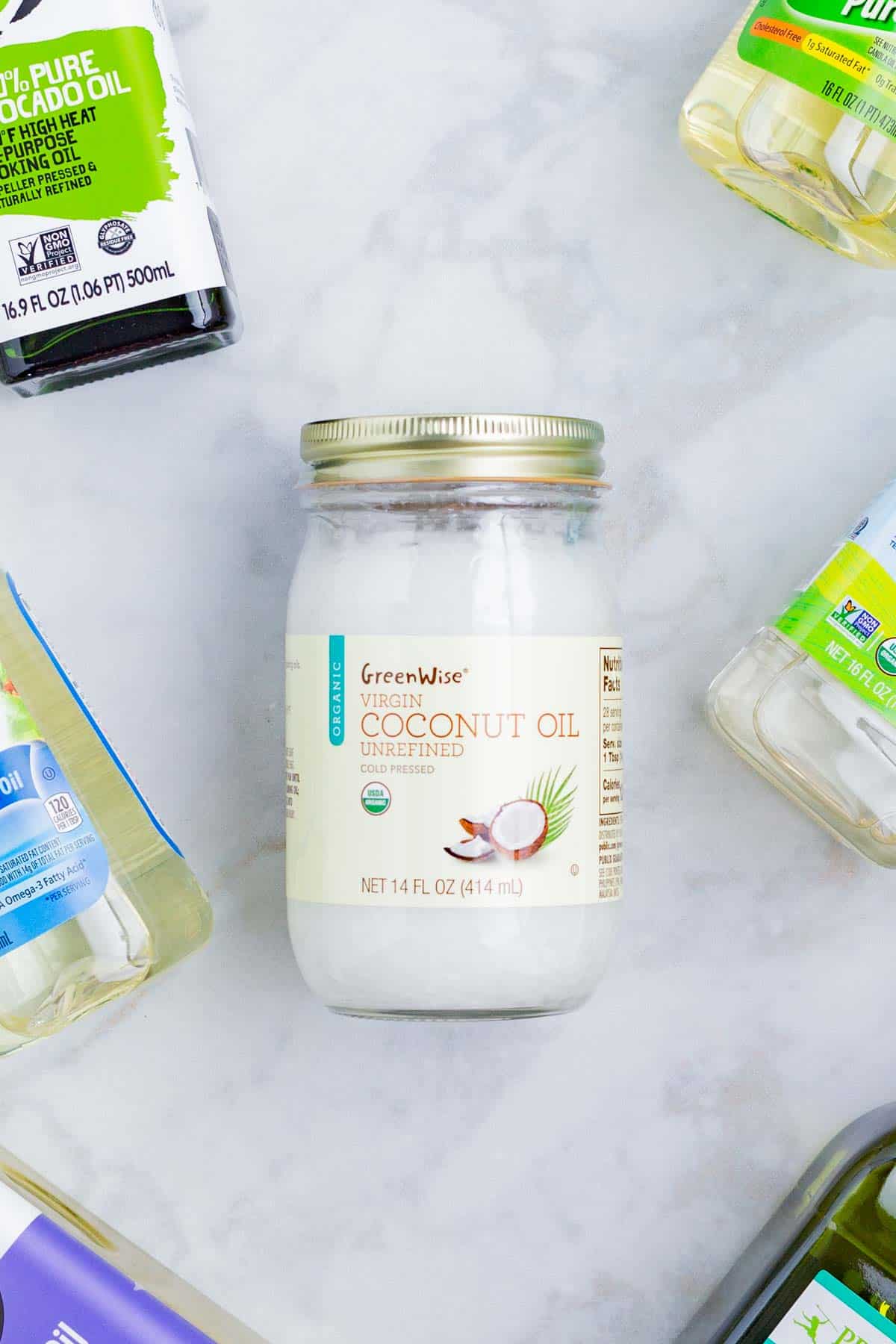
Smoke Point FAQ
Peanut or canola oils are the best for deep frying.
Olive oil is the most common and easiest oil to find at your nearest grocery store and is best used for cooking.
An oil with a more neutral taste is vegetable oil.
High smoke point means that the oil can withstand high heat without burning.
Avocado oil has the highest smoke point.
Flaxseed is one of the lower smoke point oils.
Vegetable oil is made of seeds, fruits, nuts, and grains.
No. A melting point is the point at which materials changes from a solid to a liquid. A smoke point is when the oil in the pan stops shimmering and burns/smokes instead.

Recipes Including Oils
Test out your knowledge of smoke points with some of these recipes! Each uses the type of oil most appropriate for the level of heat needed to cook the dish:

